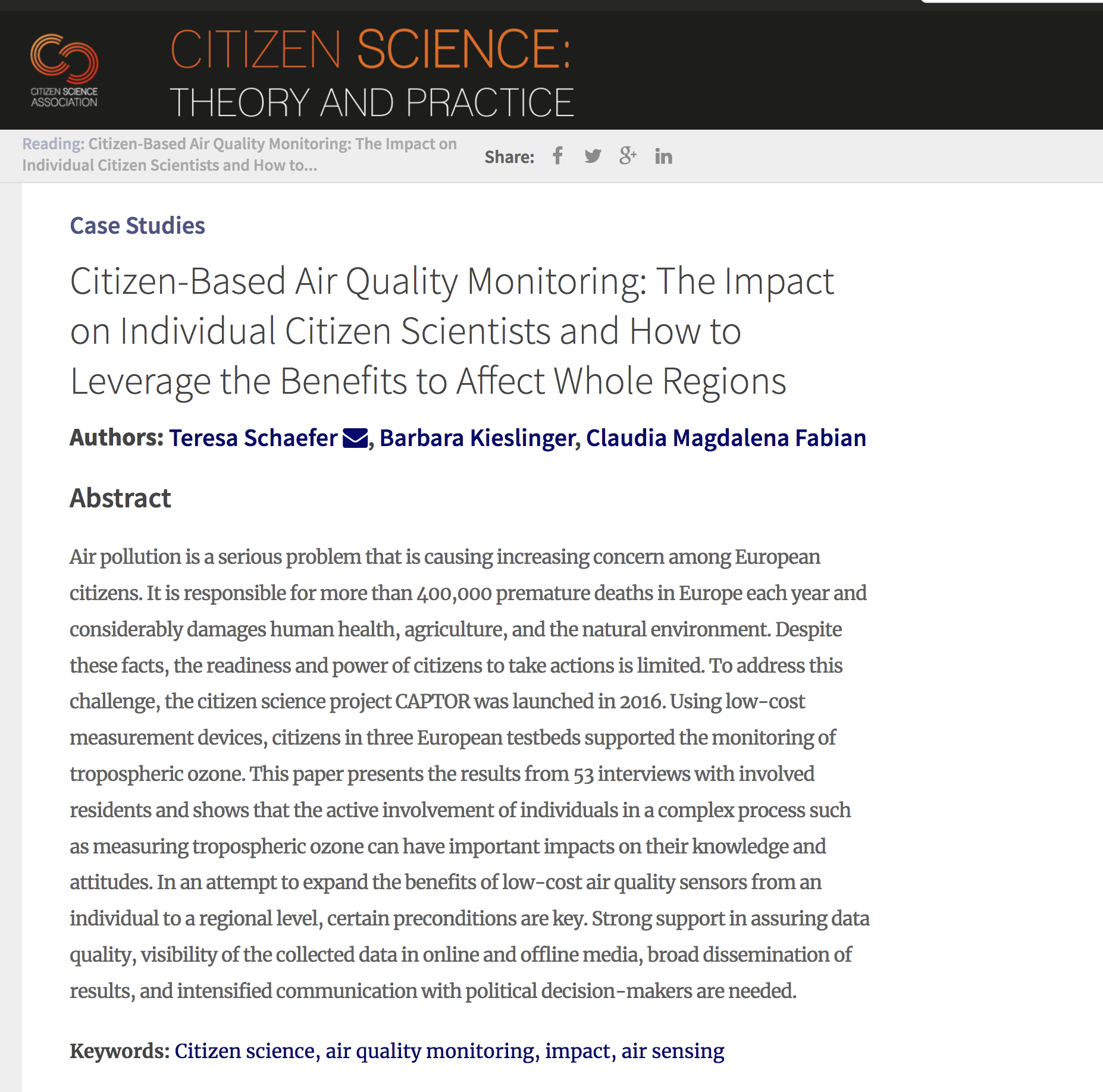This project addresses citizen-based air monitoring too, but as the project set up is completely different from the one of the CurieuzeNeuzen project the evaluation approach differs a lot, too.

CAPTOR (https://www.captor-project.eu/) involved volunteers in three different regions in Spain, Austria and Italy in the measurement of tropospheric ozone. It was the first of this type of projects that tried to build low-cost ozone measurement devices that are hosted by citizens. So one focus of this project was to collect hands-on experiences with the low-cost device, its calibration and maintenance and the presentation of the collected life-pollution-data; the second aim was to raise awareness for the ozone pollution and influence local political decisions with regard to the air-pollution problem. As the “low-cost” measurement devices are still quite expensive there was only a limited number of participants who could host a device in their garden or on their balcony. So altogether 46 captor measurement devices were installed in citizens gardens and balconies in the three different regions for two measurement periods. The collected data on tropospheric ozone were visualized on a map and updated every 20 minutes - thus the hosts of the devices and their neighbourhood had the possibility to observe the ozone levels in their region and also see when these values were exceeding the threshold value for protection of human health defined by the EU and the WHO.
A very specific challenge in this project was that tropospheric ozone is formed in rural areas through chemical reactions from precursor gases emitted mainly in urban environments. Thus high tropospheric ozone is very often a problem of the greenbelts
around big cities and the polluters (the urban population) often do not suffer from the effects of the degraded air quality generated by their emissions to the same extent, whereas the rural population has limited influence on the emissions which
degrade the air they breathe. Tropospheric ozone is also called the “forgotten” pollutant due to this fact: often citizens think that they are living in healthy areas outside of the city and are not aware that the ozone pollutant exists - a
fact that politicians in these regions are not very eager to addresse and change.
Here is an introduction to the project:
Objective:
Approach:
The evaluation in this project was based on 53 interviews with involved citizens (hosts of the CAPTOR measurement devices). Interviewees were approached by team members and participated voluntarily. The questions covered
the interviewees’ activities as hosts,
the encountered problems,
previous knowledge and experiences with ozone,
the motivational drivers for participation,
the perceived personal effects as well as
the effects for the whole region.
The interviews were conducted in the mother tongue of interviewees, tape-recorded and documented in protocols in English. The interview protocols were transferred to a content coding tool and analysed by two researchers independently.
In addition to the interviews with private persons, also interviews with representatives from the local municipalities were organised, as it was important to understand their experiences with the project.
Also, the evaluation team observed and documented the different settings in the three regions. How big was the testbed? Was the source of the pollutant clearly definable? Was there a strong presence of NGOs? Were there additional workshops,
discussions etc organised?
Here are the question guidelines of the interviews in 2018.
The results showed that even in such a complex project like CAPTOR, a citizen science project can positively affect a whole region and influence political decision makers. The main lessons learned from the project evaluation are presented in this open-access article:
https://theoryandpractice.citizenscienceassociation.org/articles/10.5334/cstp.245/
